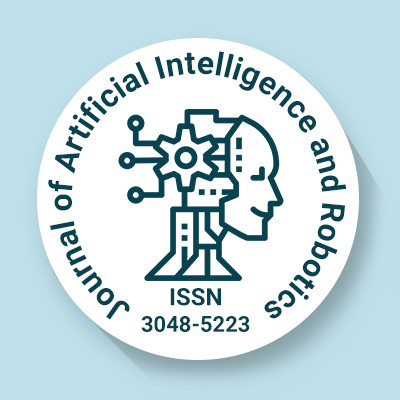
Journal of Artificial Intelligence and Robotics
OPEN ACCESS
ISSN: 3048-5223

OPEN ACCESS
ISSN: 3048-5223
Robot vision is a fascinating area of computer vision that empowers robots to see and engage with their surroundings through visual perception. It brings together a mix of fields like artificial intelligence, image processing, optics, and machine learning, giving robotic systems the tools they need to analyze and make sense of visual information. By emulating how humans see, robots can tackle intricate tasks such as detecting objects, recognizing them, tracking movements, and navigating through ever-changing environments.
At the heart of robot vision are image acquisition systems, which usually consist of cameras and sensors that gather visual data from the environment. These cameras can vary widely, from standard RGB cameras to more sophisticated setups like stereo vision, infrared, and LiDAR systems. The choice of imaging technology is crucial and depends on the specific application, as different tasks and environments call for different levels of depth perception, resolution, and adaptability to varying lighting conditions. For example, self-driving cars use a mix of cameras and LiDAR to spot obstacles and navigate safely, while industrial robots might rely on high-resolution cameras for precise assembly work.
Once an image is captured, robot vision systems dive into processing the data with advanced algorithms to pull out valuable insights. Techniques like edge detection, filtering, and segmentation help robots separate objects from their backgrounds and pinpoint specific features. To take it a step further, computer vision techniques incorporate machine learning and deep learning models, enhancing the robot's ability to recognize patterns, classify objects, and even anticipate movements. Modern robot vision applications often utilize convolutional neural networks (CNNs) and vision transformers because of their prowess in managing complex visual data.
One of the biggest hurdles in robot vision is achieving reliable perception in the messy, unpredictable world we live in. Unlike the neat and tidy conditions of a lab, real-life environments are full of variables like changing light, obstacles, and moving objects. To tackle these issues, researchers use techniques like sensor fusion, which combines data from various sensors think cameras and depth sensors to boost accuracy and reliability. Plus, real-time processing is essential for many applications, so optimizing vision algorithms is key to making quick decisions without lagging behind.
Robot vision is making waves across a variety of industries. In manufacturing, vision-guided robotic systems are stepping up automation by allowing robots to inspect products, assemble parts, and carry out quality checks. In healthcare, surgical robots rely on vision to aid in minimally invasive procedures, enhancing precision and cutting down on human error. Meanwhile, autonomous robots in agriculture use vision systems to keep an eye on crop health, spot pests, and streamline harvesting. Additionally, humanoid and service robots harness vision for interacting with people, recognizing gestures, and analyzing facial expressions, which boosts their ability to help out in different tasks.
As artificial intelligence and computer vision keep advancing, robot vision is evolving to become even more sophisticated. The integration of neuromorphic computing where vision processing mimics how our brains work efficiently and edge computing, which enables real-time vision processing on low-power devices, is shaping the future of this field. The ongoing development of self-learning vision systems will empower robots to adapt to new environments without needing extensive reprogramming, paving the way for more autonomous and intelligent robotic solutions.